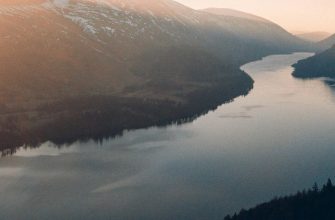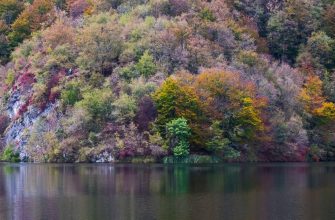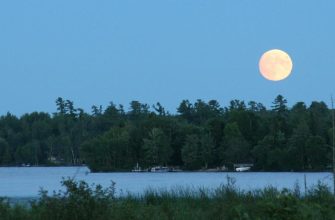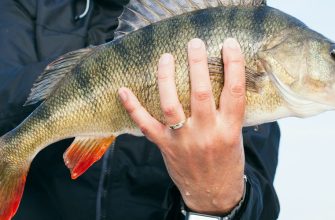- Lake Overview
- Lake Characteristics
- Geography
- Size and Depth
- Shoreline and North Arm
- Water Temperature During Fishing Seasons
- Key Areas on Lake
- Know the Waters and Their History
- Lake Access
- Amenities
- Accommodation
- Lake Recreation
- Meals & Dining
- Most Caught Species
- Lake Trout
- Grayling
- Northern Pike
- Whitefish
- Where to Catch
- East Arm
- Hay River
- Yellowknife Bay
- Slave River Delta
- Lake Trout, Grayling and Pike Fishing on the East Arm of Great Slave Lake
- Lake Trout
- Grayling
- Pike
- Northern Pike (esox lucius) Catching
- Why is the Pike so Big Up Here?
- Where is the Big Pike?
- When is It Biting?
- Best Baits
- Catching Tips and Techniques
- Fly Fishing
- Fly Angling Basics
- Dry Fly Paradise: Experience the thrill of capturing dry flies
- Nymphing Opportunities: Discover the productive nymphing spots on the lake
- Luxurious NWT Winter Vacations
- Winter Angling Escapes: Combine unforgettable catching experiences with luxurious winter vacations
- Cozy Wilderness Lodges: Indulge in comfortable accommodations amidst the winter wonderland
- Aurora Borealis Spectacles: Witness the mesmerizing Northern Lights during your stay
- Fishing Regulations
- Size and Bag Limits
- Catch and Release Practices
- Seasonal Restrictions
- Angling etiquette, according to the ‘Mayor of Quiet Cove’
- Northwest Territories Fishing License
- Licensing Requirements
- Non-Resident Licenses
- License Renewal
- FAQs
- Q: Where is the best spot for shore lunch on Great Slave Lake?
- Q: Are professional guides available for Great Slave Lake fishing trips?
- Q: What makes Great Slave Lake a world-class fishery?
- Q: Can you see the amazing aurora while fishing on Great Slave Lake?
- Q: Are there fine restaurants near Great Slave Lake?
- Q: What are some notable features of Great Slave Lake?
Great Slave Lake, located in Canada, is a true paradise for fishing enthusiasts. With its clean waters and breathtaking natural beauty, this lake offers an unforgettable experience for those who love camping and angling.
As one of the largest lakes in North America, this lake is renowned for its world-class catching opportunities. Fishermen from around the globe come here to test their skills and try their luck at catching trophy trout and pike.
Situated just a short ride from Yellowknife, the Great Slave basin offers easy access to its vast waters. Whether you prefer catching from a boat or casting your line from the dock, you’ll find plenty of spots to explore. The lake is dotted with cozy cabins, providing a comfortable retreat after a day of angling.

Near the mouth of the Mackenzie River, you’ll find the charming community of Lutsel K’e. This small village offers not only running water and modern amenities but also warm hospitality that will make you feel right at home. From Lutsel K’e, you can venture out to the pure Stark River and enjoy the tranquility of nature.
Exploring the lake, you’ll also come across Fort Providence, a historic community on the shores of the Mackenzie River. Here, you can immerse yourself in the rich history of the region and discover the cultural heritage of the Dene people.
For those who appreciate fine dining and relaxation, Yellowknife’s Old Town is a must-visit. This vibrant neighborhood boasts a variety of restaurants where you can savor delicious local cuisine. After a satisfying meal, take a stroll along the shores of Back Bay and enjoy the scenic beauty of the Canadian Shield.
Whether you’re an experienced fisherman or a novice, Great Slave reservoir offers something for everyone. Step outside and experience the thrill of reeling in a trophy fish or simply soak in the tranquility of this magnificent lake. With its world-class catching, stunning landscapes, and warm hospitality, Great Slave Lake is a destination that will leave you with unforgettable memories.
So why wait? Study the information in this article and plan your next angling adventure at this lake and discover the wonders of this remarkable Canadian gem.
Lake Overview

This lake holds the distinction of being the deepest lake in North America. Its clean waters and abundant fish populations make it a paradise for fishermen seeking an unforgettable catching experience.
Lake Characteristics
Geography
Situated in the heart of Canada’s Northwest Territories, this lake stretches across an expansive area, covering approximately 27,200 square miles. It is bordered by picturesque landscapes and breathtaking natural beauty.
Size and Depth
Lake boasts an impressive size, measuring about 300 miles in length and 50 miles in width. With a maximum depth of 2,015 feet, it plunges to incredible depths that are home to various species.
Shoreline and North Arm
The lake’s extensive shoreline spans over 2,000 miles, offering ample opportunities for fishermen to find their ideal catching spots. The North Arm of Great Slave Lake, in particular, is renowned for its rich biodiversity and abundance of fish.
Water Temperature During Fishing Seasons
The water temperature of this lake varies throughout the catching seasons. During the summer months, it ranges from 50 to 68 degrees Fahrenheit (10 to 20 degrees Celsius), providing optimal conditions for various species.
Key Areas on Lake
To make the most of your catching experience, it’s essential to familiarize yourself with its key areas. Here are a few notable spots:
- Yellowknife: The capital of the Northwest Territories and a popular starting point for angling adventures on the lake.
- Arm of Great Slave Lake: A prime location known for its excellent catching opportunities and scenic beauty.
Know the Waters and Their History
Before embarking on your angling expedition to this lake, it is recommended to study the lake’s waters and history. This will give you a deep understanding of its unique ecosystem and the connection between its aquatic life and the natural environment. This knowledge will enhance your catching experience and appreciation for the lake’s beauty and historical significance.
As the deepest lake in North America, it offers clean waters and abundant populations, making it a paradise for fishermen. Its rich history and cultural significance add to its allure.
Understanding the lake’s ecosystem is key to being a responsible fisherman. By learning about its diverse species, habitats, and food sources, you can protect and preserve this fragile ecosystem. Additionally, recognizing the cultural significance of this lake to the Dene people deepens your appreciation for the lake and its inhabitants.
Familiarize yourself with different regions and key areas of the lake. Yellowknife, the capital city, is a popular starting point for angling adventures. The North Arm is known for its biodiversity and fish abundance. Each region offers unique catching opportunities.
Remember, your trip to this lake is not just about catching. It is an opportunity to connect with nature, immerse yourself in history and culture, and create lasting memories. Embrace the knowledge gained from studying the lake to fully appreciate its beauty and significance.
Lake Access
Getting to Lake is an adventure in itself. Once you arrive in Yellowknife, you’ll be greeted with a vibrant and bustling city. Explore the charming streets filled with unique shops, cozy cafes, and delicious restaurants. Immerse yourself in the rich culture and history of the region by visiting the local museums and art galleries.
When you’re ready to embark on your lake adventure, you’ll have plenty of options to choose from. Whether you’re interested in catching, boating, or simply enjoying the breathtaking scenery, there are numerous outfitters and angling charters in Yellowknife who are eager to assist you. They will provide you with all the necessary equipment and guidance to make your experience on the lake unforgettable.
As you venture out onto the vast waters of this lake, you’ll be mesmerized by its sheer size and beauty. With over 27,000 square kilometers of unspoiled wilderness, the lake offers endless opportunities for exploration and discovery. Cast your line and try your luck at catching one of the many species that inhabit the lake, including lake trout, northern pike, and arctic grayling.
Don’t forget to take a moment to appreciate the stunning landscape that surrounds you. The lake is surrounded by towering cliffs, dense forests, and picturesque islands, creating a truly awe-inspiring setting. Whether you’re an avid outdoor enthusiast or simply looking for a peaceful retreat, this lake has something to offer everyone.
Amenities
When you plan a trip to this lake, you’ll discover a wide array of amenities that will greatly enhance your catching experience. Whether you’re looking for cozy and comfortable accommodations or fully-equipped angling lodges, you will have plenty of options to choose from, ensuring that every fisherman’s preferences are met and exceeded. With these incredible amenities at your disposal, your angling adventure at this lake will be truly unforgettable.
Accommodation
Whether you choose to stay in a cozy lodge or a remote angling camp, the accommodations near this lake offer a wide range of options to cater to the diverse needs of fishermen. From luxurious lodges with stunning lake views to rustic angling camps nestled in the wilderness, there is something for every fisherman’s preference.
Lodge owners and staff are not only friendly and welcoming but also highly knowledgeable about the lake’s catching hotspots. They have spent years exploring the lake and honing their catching skills, making them the perfect guides for your angling adventure. They can provide valuable insights and tips on the best catching techniques, the most productive bait to use, and the optimal time and location to catch your desired species.
In addition to their expertise, lodge owners and staff are passionate about ensuring that every fisherman has a successful catching trip. They go above and beyond to make your stay comfortable and enjoyable. They can assist in arranging angling charters, boat rentals, and even organizing catching tournaments for those looking for a competitive edge.
So whether you are a seasoned fisherman or a novice looking for an exciting catching experience, the accommodations near this lake are your gateway to an unforgettable angling adventure.
Lake Recreation
Beyond catching, this lake offers a plethora of recreational activities to enjoy. In addition to kayaking and canoeing, you can also partake in wildlife viewing and hiking, allowing you to fully immerse yourself in the breathtaking natural wonders of Northwest Canada. Whether you prefer the serenity of gliding through the calm waters in a kayak or the thrill of encountering majestic wildlife during a hike, the possibilities for adventure and exploration are truly endless in this remarkable region.
Meals & Dining
After a fun-filled day of catching, take the time to fully immerse yourself in the rich and vibrant flavors of the region by treating yourself to delectable meals that showcase the freshest and most succulent fish caught right from the Lake. Whether you prefer a lodge or resort, you can rest assured that they offer exceptional dining experiences that will tantalize your taste buds and allow you to indulge in the culinary delights this magnificent lake has to offer.
In addition to the incredible dining experiences, don’t miss out on the opportunity to explore the countless wonders that the Lake has in store for you. This remarkable natural treasure in Canada presents a perfect setting for an unforgettable angling adventure that will leave you with memories to cherish for a lifetime. So gear up and get ready to embark on a thrilling journey that will not only satisfy your love for catching but also provide you with an experience that will truly take your breath away.
Most Caught Species
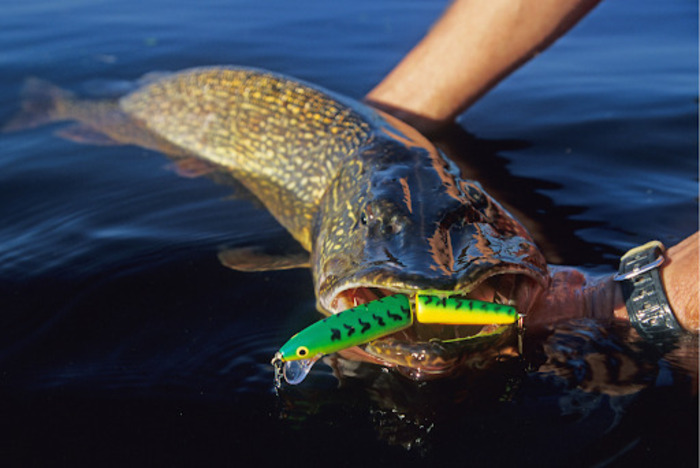
Lake Trout
At this lake, fishermen have the opportunity to catch this species. These magnificent species are known for their size and strength, making them a thrilling challenge to reel in. To increase your chances of success, it’s important to learn the techniques specific to catching in this region. Whether you prefer trolling, casting, or jigging, understanding the behavior and habitat of this species will greatly enhance your angling experience.
Grayling
Another species that fishermen frequently encounter at this lake is the Arctic grayling. These beautiful species are known for their unique fighting characteristics, providing fishermen with an exciting battle on the other end of the line. With their distinctive dorsal fin and vibrant colors, grayling is a sight to behold. Discover the abundance of graylings in the lake and learn the best techniques to catch them.
Northern Pike
For those seeking an adrenaline rush, the aggressive and powerful northern pike is the species to target. These apex predators inhabit the waters of this lake and offer an exhilarating catching experience. Known for their explosive strikes and relentless fights, this species can provide hours of excitement. Explore the thrill of reeling in these ferocious fish and learn the strategies to land the super-sized pike.
Whitefish
The elusive whitefish species adds an extra level of challenge to catching at this lake. With their keen senses and cautious nature, whitefish can be a rewarding catch for skilled fishermen. Patience and persistence are key when targeting these elusive species. Enjoy the challenge of outsmarting whitefish and revel in the satisfaction of a successful catch.
Where to Catch

East Arm
The East Arm region of Lake offers a plethora of catching hotspots for fishermen to explore. With its clean waters and abundant populations, this area is a must-visit for any catching enthusiast. Whether you’re targeting super-sized lake trout, northern pike, or Arctic grayling, the East Arm has it all. Be sure to check out popular catching spots like Gordon Bay, Christie Bay, and Latham Island for a chance to reel in some impressive catches.
Read more: Lake Hartwell Bass Fishing: Guide to Trophy Major League Fishing Sized Bass
Hay River
Located near the town of Hay River, this area is known for its productive catching opportunities. The Hay River region provides excellent access to this lake and its diverse species. Fishermen can expect to find an abundance of walleye, northern pike, and whitefish in these waters. Some popular catching locations near Hay River include the mouth of the Hay River, Queen’s Bay, and the Pine Point area. Don’t forget to bring your catching gear and get ready for an exciting day on the water.
Yellowknife Bay
Yellowknife Bay is a prime catching destination on this lake. This area offers excellent angling opportunities and stunning scenic views. Fishermen can target a variety of species, including lake trout, northern pike, and whitefish. From the comfort of your boat or from the shoreline, you can cast your line and enjoy a productive day of catching. Don’t miss the chance to explore the waters around Yellowknife Bay and experience the thrill of reeling in some impressive catches.
Slave River Delta
The Slave River Delta is a unique catching spot that offers a diverse range of angling opportunities. This expansive area is known for its rich biodiversity and is home to a wide variety of species. Fishermen can explore the maze of channels and backwaters, targeting species such as walleye, northern pike, and yellow perch. With its tranquil beauty and abundant fish populations, the Slave River Delta is a paradise for those seeking a memorable angling experience.
When planning your catching trip to this lake, be sure to consider these top catching locations. Each area offers its own unique charm and promises an unforgettable angling adventure.
Lake Trout, Grayling and Pike Fishing on the East Arm of Great Slave Lake
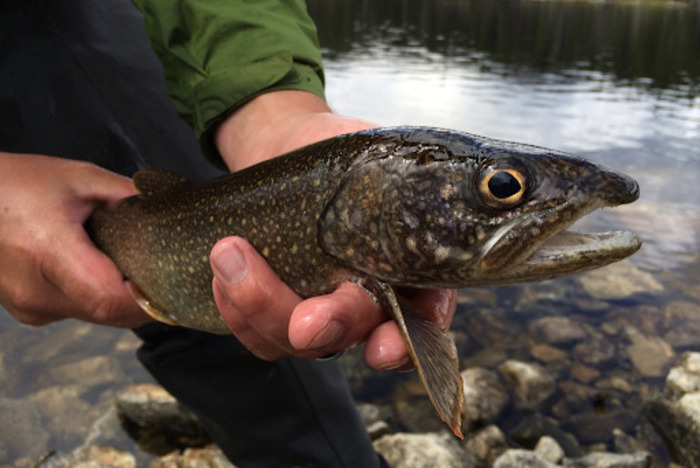
Lake Trout
The East Arm is renowned for its super-sized lacustrine char. If you’re an avid fisherman seeking an exhilarating angling experience, this is the place to be. The crystal-clear waters of the lake provide the perfect habitat for these prized catches.
Non-saline water char in the East Arm can grow to impressive sizes, often exceeding 40 pounds. Their size, coupled with their strength and fighting spirit, makes them a sought-after catch for fishermen from around the world. To increase your chances of landing a trophy non-saline water char, it’s recommended to hire a local angling guide who knows the best spots and techniques to target these magnificent species.
Grayling
The East Arm is not only home to trophy non-saline water char but also boasts an abundance of grayling. These beautiful species, known for their distinctive dorsal fin and shimmering silver color, thrive in the crystal-clear waters of the lake.
Grayling catching on the East Arm offers a unique and rewarding experience. Known for their acrobatic jumps and relentless fighting spirit, grayling provides an exciting challenge for fishermen of all skill levels. Whether you prefer fly catching or spin catching, the East Arm offers ample opportunities to test your angling skills and reel in these stunning catches.
Pike
If you’re seeking an adrenaline-pumping angling adventure, look no further than pike catching in Northwest Canada. The East Arm is a haven for pike, offering fishermen the chance to target these aggressive and powerful predators.
Pike thrive in the diverse ecosystems of the lake, including weed beds, rocky structures, and shallow bays. They are known for their voracious appetite and explosive strikes, making them a thrilling species to pursue. Whether you prefer casting attractors or using live bait, the East Arm provides an abundance of opportunities to hook into a super-sized pike.
Northern Pike (esox lucius) Catching
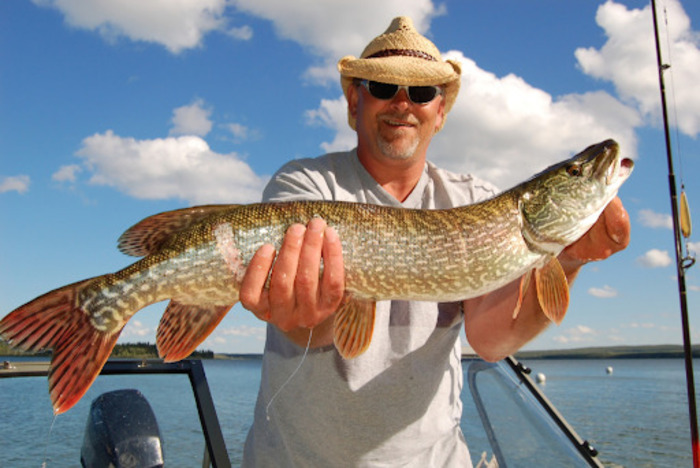
Why is the Pike so Big Up Here?
The waters of this lake provide an ideal habitat for this species to thrive and grow to impressive sizes. The lake’s vast size and abundance of prey fish contribute to the pike’s healthy population and substantial growth. Additionally, the relatively untouched nature of the lake ensures a thriving ecosystem, allowing pike to reach their full potential.
Where is the Big Pike?
This lake is known for its super-sized pike, and there are several hotspots where fishermen can target these impressive species. One popular location is the East Arm, where deep underwater structures and weed beds provide ample hiding spots for large pike. The Hay River area is also renowned for its trophy pike, with its rocky shorelines and submerged logs attracting these apex predators.
When is It Biting?
The best time for this species to catch in this lake is during the summer months, from June to September. During this period, the water temperature is ideal, and pike are actively feeding. Early mornings and late evenings are particularly productive, as pike tend to be more active during these cooler hours.
Best Baits
When targeting this species in Great Slave Lake, it’s important to have the right baits in your tackle box. Some effective baits for pike catching include large spoons, spinnerbaits, and jerkbaits. These attractors mimic the movements of prey fish and can entice aggressive strikes from hungry pike. Additionally, using live bait such as minnows or leeches can also yield excellent results.
Catching Tips and Techniques
To maximize your success in catching, consider the following tips and techniques:
- Location: Look for areas with structure, such as weed beds, submerged logs, and rocky shorelines, where pike are likely to hide and ambush their prey.
- Retrieval Speed: Vary your retrieval speed to find the optimal pace that triggers pike strikes. Experiment with slow and fast retrieves to see which works best on any given day.
- Lure Selection: Don’t be afraid to try different attractor colors and sizes to find what the pike is most attracted to. Chartreuse, orange, and silver are often effective color choices.
- Setting the Hook: When a pike strikes, wait for a moment before setting the hook. Pike have a bony mouth, so a delayed hookset can help ensure a solid connection.
- Handling Pike: Use a landing net and proper handling techniques to minimize stress on the fish. Pike have sharp teeth, so be cautious when handling and releasing them.
By following these tips and techniques, fishermen can increase their chances of landing Northern Pike in this lake.
Fly Fishing
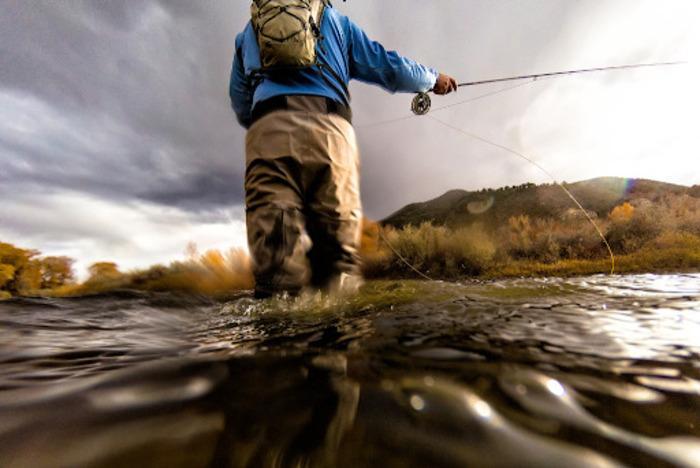
Fly Angling Basics
Fly angling is a captivating and rewarding angling technique that has been practiced for centuries. It involves using a specialized catching rod known as a fly rod and lightweight artificial flies to entice the catch to bite. This lake offers fantastic opportunities for fly-angling enthusiasts to hone their skills and experience the thrill of catching fish in its clean waters.
To get started with fly angling, you’ll need a few essential pieces of equipment. The most important tool is the fly rod, which is specifically designed for casting lightweight flies. While there are various types and sizes of fly rods available, a versatile 9-foot rod with medium to fast action is a great choice for beginners. Pair it with a weight-forward floating fly line, which will help you cast your flies accurately and with ease.
Once you have your gear ready, it’s time to learn the basic techniques of fly angling. One of the fundamental skills is casting, where you use the fly rod to accurately present the fly to the fish. Practice your casting technique on land before heading out onto the water, focusing on smooth and controlled movements to achieve a delicate presentation.
Dry Fly Paradise: Experience the thrill of capturing dry flies
This lake is renowned for its abundant insect life, making it a paradise for dry fly angling. Dry flies imitate insects that float on the water’s surface, and observing a catch rise to take your fly is an exhilarating experience. To maximize your chances of success, it’s crucial to understand the insects present in the lake and match your fly patterns accordingly.
Some popular dry flies to try at the lake include the Adams, Elk Hair Caddis, and Royal Wulff. These patterns mimic various insects such as mayflies, caddisflies, and terrestrials, which are all part of the lake’s diverse insect population. Remember to observe the water’s surface for any signs of insect activity, as captures are more likely to feed on the surface during hatches.
When presenting your dry fly, aim for a drag-free drift. This means allowing the fly to float naturally with the current, avoiding any unnatural movements that may spook the capture. Keep a close eye on the fly and be prepared for any subtle takes or rises. Once you see a capture take your fly, and resist the urge to strike immediately. Instead, wait for the capture to fully take the fly into its mouth before setting the hook with a gentle yet firm motion.
Nymphing Opportunities: Discover the productive nymphing spots on the lake
Nymphing is another effective technique for fly angling at this lake. Nymphs are aquatic insects in their immature stages and capture often feed on them below the water’s surface. By using nymph fly patterns and specialized nymphing techniques, you can target captures that are actively feeding underwater.
To begin nymphing, you’ll need a selection of weighted nymph flies and a nymphing rig. The rig typically consists of a strike indicator, a leader, tippet material, and one or more nymph flies. Cast your nymph rig upstream and allow it to drift naturally with the current, keeping a close eye on the strike indicator for any subtle movements that indicate a capture has taken the nymph.
Productive nymphing spots on this lake include submerged rocks, weed beds, and drop-offs. These areas provide cover and food sources for captures, making them prime locations to target. Adjust the depth of your nymph rig based on the water conditions and the capture’s feeding behavior. Be patient and maintain a slow and steady retrieve to entice the capture to strike.
Luxurious NWT Winter Vacations
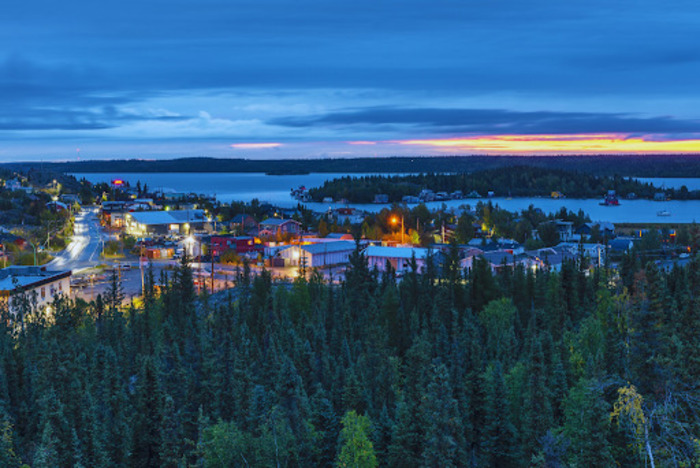
Winter Angling Escapes: Combine unforgettable catching experiences with luxurious winter vacations
When it comes to combining the thrill of angling with a luxurious winter getaway, look no further than America’s lake fishing destinations. One such destination that stands out is the breathtaking Great Slave Lake. Renowned for its abundant aquatic population and stunning natural beauty, this winter angling escape offers an experience like no other.
Cozy Wilderness Lodges: Indulge in comfortable accommodations amidst the winter wonderland
As you embark on your luxurious NWT winter vacation, you’ll find yourself surrounded by cozy wilderness lodges that provide the perfect retreat after a day of exhilarating angling. These lodges offer comfortable accommodations that blend seamlessly with the winter wonderland surroundings. Imagine cozying up by a crackling fireplace, enjoying a warm cup of cocoa, and relishing the serene ambiance of the lake region.
Aurora Borealis Spectacles: Witness the mesmerizing Northern Lights during your stay
One of the most enchanting aspects of a winter vacation in the NWT is the opportunity to witness the mesmerizing Northern Lights, also known as the Aurora Borealis. Picture yourself standing under a starry sky, watching as vibrant ribbons of green, purple, and blue dance across the horizon. This awe-inspiring natural phenomenon adds an extra touch of magic to your luxurious getaway.
Fishing Regulations
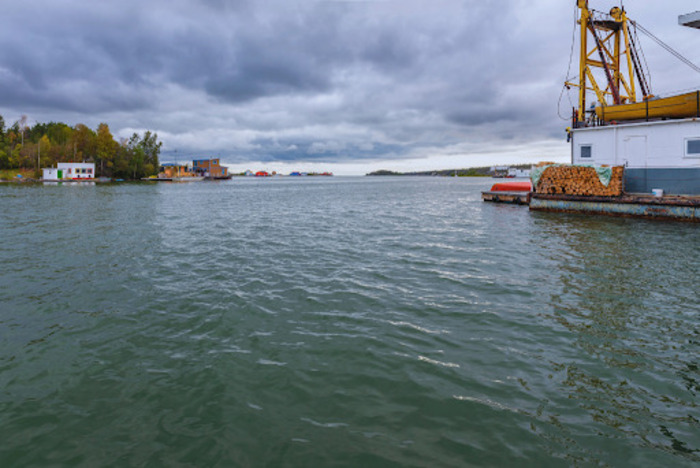
Size and Bag Limits
When angling at this lake, it is vital to understand the regulations regarding fish dimensions and bag limits. These regulations are in place to ensure the sustainability of the lake’s aquatic population and to preserve the natural ecosystem.
The dimension limit refers to the minimum size at which a fish can be legally kept. It is critical to familiarize yourself with the specific size limits for each species you intend to catch. For instance, the dimension limit for lake trout at this lake is typically 50 centimeters (approximately 19.7 inches). Any lake trout caught below this size must be released back into the water.
Bag limits, on the other hand, determine the maximum number of catches you are allowed to retain during an angling trip. This limit varies depending on the species of fish and sometimes the time of year. It is essential to check the current bag limits before your angling excursion to ensure compliance with the regulations.
Remember, adhering to dimension and bag limits is not only a legal requirement but also an ethical responsibility as a responsible fisherman. By respecting these limits, you contribute to the conservation of the lake’s aquatic population for future generations to enjoy.
Catch and Release Practices
Responsible catch and release techniques are crucial for maintaining the health and sustainability of the lake’s aquatic population. When practicing catch and release, follow these guidelines:
Use barbless hooks: Barbless hooks are easier to remove from the fish, minimizing harm and increasing their chances of survival.
Handle with care: When handling a catch, wet your hands to avoid removing the protective slime layer on their skin. Hold the catch gently and support its body to prevent injury.
Minimize air exposure: Keep the catch in the water as much as possible, even when removing the hook. Extended air exposure can cause stress and harm to the catch.
Use appropriate gear: Ensure you have the right angling gear for catch and release, including a landing net and long-nose pliers for hook removal.
Remember, catch and release is not only about conserving the aquatic population but also about preserving the overall ecosystem of this lake. By practicing responsible catch and release techniques, you contribute to the long-term health of the lake and its surrounding environment.
Seasonal Restrictions
Familiarize yourself with the seasonal angling restrictions at this lake. These restrictions are in place to protect aquatic creatures during critical periods such as spawning and migration. It is important to check the specific regulations and closures for the time of year you plan to engage in angling.
During certain seasons, angling may be limited or prohibited in specific areas to ensure the successful reproduction and survival of aquatic species. These restrictions are designed to maintain a healthy population of aquatic creatures and sustain the ecological balance of this lake.
By respecting and adhering to the seasonal angling restrictions, you play a vital role in preserving the natural beauty and abundance of Great Slave Lake for future generations of fishermen to enjoy.
Angling etiquette, according to the ‘Mayor of Quiet Cove’
When angling at this lake, it’s important to follow proper angling etiquette. As the ‘Mayor of Quiet Cove’ advises, respect the environment and your fellow fishermen. Be mindful of catch limits, practice catch and release, and leave no trace behind. By following these guidelines, we can ensure the preservation of this incredible angling destination for generations to come.
Northwest Territories Fishing License
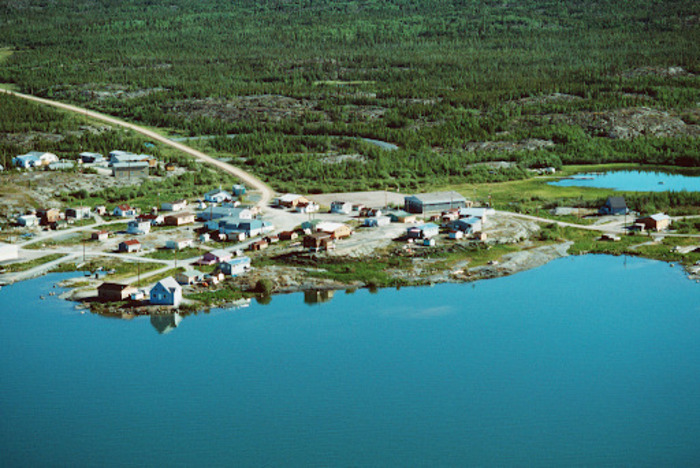
Licensing Requirements
To enjoy the thrilling experience of angling, it’s important to obtain the necessary angling license. This ensures that you are angling legally and responsibly. The licensing requirements are straightforward and designed to protect the natural beauty and sustainability of the region’s lakes.
To apply for an angling license, you can visit the official website of the Northwest Territories Department of Environment and Natural Resources. They provide detailed information on the application process, fees, and any additional documents that may be required.
Read more: Rainy Lake Fishing Guide: License, Fishing Calendar, Tips – Minnesota
Non-Resident Licenses
If you are a non-resident angler, you have several licensing options to choose from. The government has created specific licenses tailored to meet the needs of visitors who want to experience the incredible angling opportunities the region has to offer.
The non-resident licenses vary in duration and cost, allowing you to select the one that best suits your angling plans. Whether you’re visiting for a short vacation or an extended angling adventure, there is a license option available for you.
License Renewal
For those who plan to extend their angling trip or return to the Northwest Territories in the future, it’s important to be aware of the license renewal procedures and timelines. Angling licenses are typically valid for a specific period, and it’s essential to renew your license before it expires to ensure continuous angling enjoyment.
Renewal procedures can vary, so it’s recommended to check the official website or contact the Northwest Territories Department of Environment and Natural Resources for specific instructions on how to renew your angling license. By adhering to the renewal timelines, you can avoid any interruptions in your angling adventures and continue to explore the remarkable lakes of the Northwest Territories.
Disclaimer: The information provided in this article is based on reliable sources and research. It is always recommended to refer to official angling regulations and local authorities for the most up-to-date information
FAQs
Q: Where is the best spot for shore lunch on Great Slave Lake?
A: One popular spot for a shore lunch is in a peaceful cove along the shoreline. It’s a special experience to enjoy a delicious meal prepared with non-saline water fish caught right from the lake.
Q: Are professional guides available for Great Slave Lake fishing trips?
A: Yes, there are professional guides who can enhance your catching experience on Great Slave Lake. They have extensive knowledge of the lake’s channels and bays, ensuring a successful and enjoyable trip.
Q: What makes Great Slave Lake a world-class fishery?
A: Great Slave Lake is known as one of the world’s premier non-saline water fisheries. It boasts an abundance of trophy northern pike and lakers, attracting fishermen from around the globe.
Q: Can you see the amazing aurora while fishing on Great Slave Lake?
A: Absolutely! Great Slave Lake’s location in the Northwest Territories provides an incredible opportunity to witness the mesmerizing beauty of the aurora borealis while enjoying a day of catching.
Q: Are there fine restaurants near Great Slave Lake?
A: While there may not be fine dining establishments right on the lake, nearby communities like Hearne and Etthen Island offer dining options where you can savor a delicious meal after a day of catching.
Q: What are some notable features of Great Slave Lake?
A: Great Slave Lake is the deepest lake in North America, and its vast size and clean waters make it a bucket list destination for avid fishers. Its picturesque shoreline and the breathtaking views of the surrounding landscape add to its allure.

